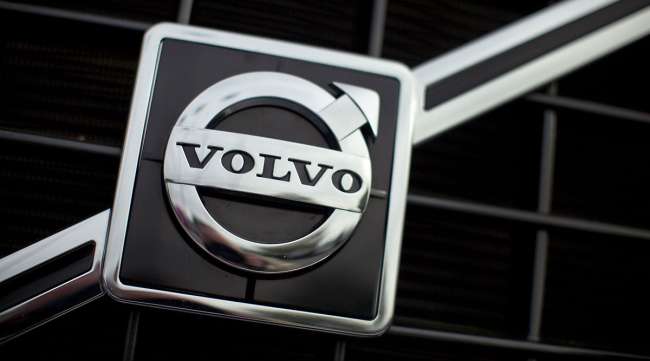News & Record (Greensboro, N.C.)
Volvo Turns 3D Printers From Making Truck Parts to Face Shields

[Ensure you have all the info you need in these unprecedented times. Subscribe now.]
GREENSBORO, N.C. — Emmanuel Fargeon has been 3D printing truck parts for Volvo for 23 years, but he never imagined he’d be creating personal protective equipment on one.
But that’s what many companies are taking on as they pivot operations to provide health care workers with gear to protect them from the coronavirus.
Fargeon, operational efficiency manager for the Greensboro technology department of Volvo Group Trucks of the Americas, has been overseeing for a month the creation of plastic visors for face shields that have gone to Cone Health.
“I’ve never made PPE before, but we are glad to jump in,” Fargeon said.
We're honored to help medical workers on the frontline. Three Volvo Trucks North America facilities have come together to provide Personal Protective Equipment (PPE) for local medical facilities.
Learn more: https://t.co/CsBvekbgHI pic.twitter.com/N2VA92xzJb — Volvo Trucks North America (@VolvoTrucksNA) April 27, 2020
The effort began when Cone Health contacted Volvo asking the company if they could help create PPE for its workers so they could be prepared when the pandemic peaked at its hospitals.
“I’ve been a business leader for more than 25 years, and I’ve been through a variety of crises and never seen one like this,” said Martin Weissburg, president of Mack Trucks and chairman of Volvo Group North America.
Weissburg said Volvo, a large employer in several midsize cities, has a history of helping the community. He turned to his engineers to see how the company could help during a pandemic.
“If we can build the best trucks and power systems in the industry, we can sure help out with some plastic parts for face masks,” he said.
Volvo previously donated to the hospital network several thousand pieces of PPE, such as safety glasses, gloves and various types of masks from its internal stock. Company executives also have re-tasked plants in Virginia, Maryland, Pennsylvania and Canada to making needed protective gear.
Volvo’s chief engineer, Steve Barnhardt, helped coordinate the North Carolina effort.
“We were able to shift some of our production tools and start producing,” Barnhardt said. “When you say people are really in need, it’s really easy to get people motivated to work on this.”
Aided by a computer design, a 3D printer uses laser technology to build a three-dimensional object from a liquid photopolymer. Micrometer layer by micrometer layer, the object takes shape from the bottom up. In this case, the object was a plastic visor that holds a clear face shield that could save lives.
Some Volvo workers are using their home-based 3D printers to create adjustable clips for masks that take the stress of the mask’s ear loops off the user’s ear. Fargeon said a home printer can produce about 70 “ear savers” in four hours.
The company’s main 3D printer has been working around the clock turning out plastic visors that will be fitted with clear plastic shields. Producing the visors takes longer and the machine can produce only about 24 a day. Fargeon has been going in on his own time to keep the printer running. Volvo has produced hundreds of face shields.
Between donations of shields from Volvo and other sources, Cone Health is at capacity, according to Mary Beth Halprin, Volvo’s vice president of PR and corporate affairs. So the company is turning its efforts to other health care facilities and offering the shields to its own employees.
That keeps the company’s 3D printers busy as they create one visor at a time.
Want more news? Listen to today's daily briefing:
Distributed by Tribune Content Agency, LLC




